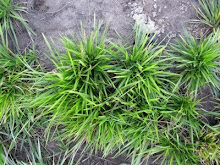This year, 2010, is the year of biodiversity and marks an important time for reflecting upon the state of biodiversity conservation in the world. Two weeks ago I went to an interesting meeting at the Royal Botanic Gardens, Kew, to discuss the Global Strategy for Plant Conservation (GSPC), which is part of the Convention on Biological Diversity. The main focus of this meeting was what we have achieved in the last ten years, but largely what have not. The GSPC had 16 targets for 2010 to improve the conservation of plant diversity (http://www.cbd.int/gspc/targets.shtml) and it was widely agreed that we've fallen short on most of these.
The next set of targets (http://www.cbd.int/convention/cops.shtml) is likely to be discussed and ratified at the COP10 meeting later this year in Japan. In the new targets there is likely to be a greater emphasis on ecosystem services, also a hot topic among scientists, governments and the business world.
The economic benefits of ecosystems and biodiversity form the theme for the 1st Global Business of Biodiversity Symposium (www.businessofbiodiversity.co.uk) in London on the 13th of July. GrassPortal, along with the Animal and Plant Sciences at the University of Sheffield, are going to be exhibiting at this event. This will be an excellent opportunity for GrassPortal to be exposed to a wider audience and to garner interest from business and government. We would like to invite our followers on the web to come meet us at the symposium and also to attend the interesting and important talks and seminars at this unique event.
1st Global Business of Biodiversity Symposium
Where: ExCel International Convention Centre, London, E16 1XL
When: 13 July 2010. Registration from 08:30
Entrance fee: £45







